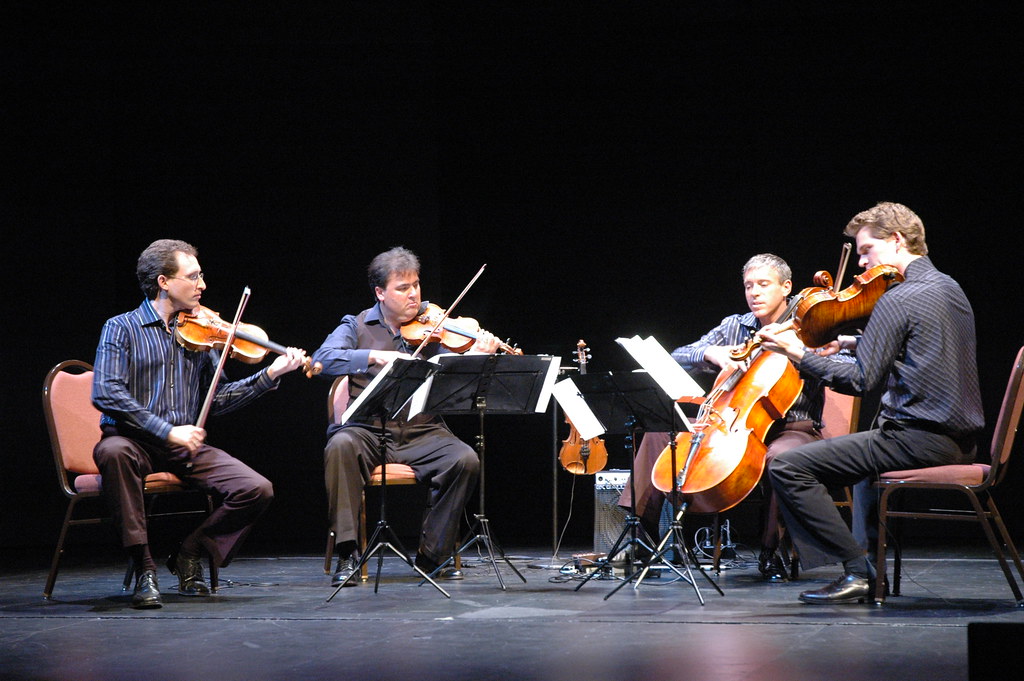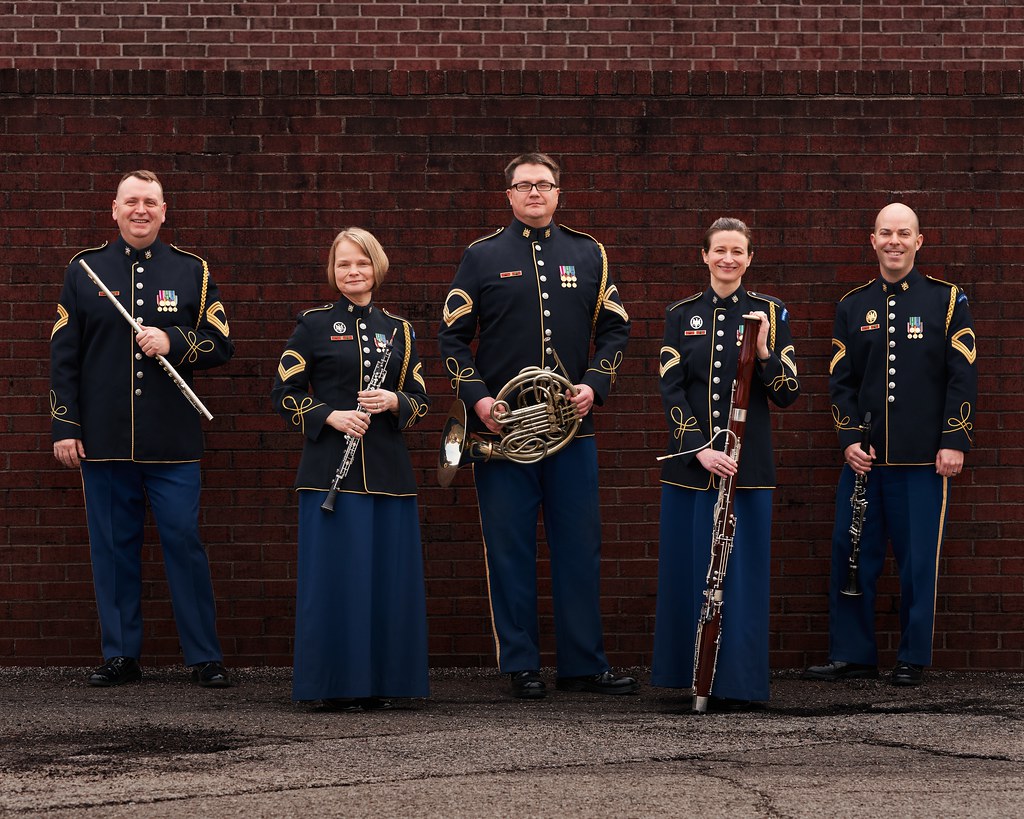2.3: Small Ensembles
- Page ID
- 165584
\( \newcommand{\vecs}[1]{\overset { \scriptstyle \rightharpoonup} {\mathbf{#1}} } \)
\( \newcommand{\vecd}[1]{\overset{-\!-\!\rightharpoonup}{\vphantom{a}\smash {#1}}} \)
\( \newcommand{\id}{\mathrm{id}}\) \( \newcommand{\Span}{\mathrm{span}}\)
( \newcommand{\kernel}{\mathrm{null}\,}\) \( \newcommand{\range}{\mathrm{range}\,}\)
\( \newcommand{\RealPart}{\mathrm{Re}}\) \( \newcommand{\ImaginaryPart}{\mathrm{Im}}\)
\( \newcommand{\Argument}{\mathrm{Arg}}\) \( \newcommand{\norm}[1]{\| #1 \|}\)
\( \newcommand{\inner}[2]{\langle #1, #2 \rangle}\)
\( \newcommand{\Span}{\mathrm{span}}\)
\( \newcommand{\id}{\mathrm{id}}\)
\( \newcommand{\Span}{\mathrm{span}}\)
\( \newcommand{\kernel}{\mathrm{null}\,}\)
\( \newcommand{\range}{\mathrm{range}\,}\)
\( \newcommand{\RealPart}{\mathrm{Re}}\)
\( \newcommand{\ImaginaryPart}{\mathrm{Im}}\)
\( \newcommand{\Argument}{\mathrm{Arg}}\)
\( \newcommand{\norm}[1]{\| #1 \|}\)
\( \newcommand{\inner}[2]{\langle #1, #2 \rangle}\)
\( \newcommand{\Span}{\mathrm{span}}\) \( \newcommand{\AA}{\unicode[.8,0]{x212B}}\)
\( \newcommand{\vectorA}[1]{\vec{#1}} % arrow\)
\( \newcommand{\vectorAt}[1]{\vec{\text{#1}}} % arrow\)
\( \newcommand{\vectorB}[1]{\overset { \scriptstyle \rightharpoonup} {\mathbf{#1}} } \)
\( \newcommand{\vectorC}[1]{\textbf{#1}} \)
\( \newcommand{\vectorD}[1]{\overrightarrow{#1}} \)
\( \newcommand{\vectorDt}[1]{\overrightarrow{\text{#1}}} \)
\( \newcommand{\vectE}[1]{\overset{-\!-\!\rightharpoonup}{\vphantom{a}\smash{\mathbf {#1}}}} \)
\( \newcommand{\vecs}[1]{\overset { \scriptstyle \rightharpoonup} {\mathbf{#1}} } \)
\( \newcommand{\vecd}[1]{\overset{-\!-\!\rightharpoonup}{\vphantom{a}\smash {#1}}} \)
\(\newcommand{\avec}{\mathbf a}\) \(\newcommand{\bvec}{\mathbf b}\) \(\newcommand{\cvec}{\mathbf c}\) \(\newcommand{\dvec}{\mathbf d}\) \(\newcommand{\dtil}{\widetilde{\mathbf d}}\) \(\newcommand{\evec}{\mathbf e}\) \(\newcommand{\fvec}{\mathbf f}\) \(\newcommand{\nvec}{\mathbf n}\) \(\newcommand{\pvec}{\mathbf p}\) \(\newcommand{\qvec}{\mathbf q}\) \(\newcommand{\svec}{\mathbf s}\) \(\newcommand{\tvec}{\mathbf t}\) \(\newcommand{\uvec}{\mathbf u}\) \(\newcommand{\vvec}{\mathbf v}\) \(\newcommand{\wvec}{\mathbf w}\) \(\newcommand{\xvec}{\mathbf x}\) \(\newcommand{\yvec}{\mathbf y}\) \(\newcommand{\zvec}{\mathbf z}\) \(\newcommand{\rvec}{\mathbf r}\) \(\newcommand{\mvec}{\mathbf m}\) \(\newcommand{\zerovec}{\mathbf 0}\) \(\newcommand{\onevec}{\mathbf 1}\) \(\newcommand{\real}{\mathbb R}\) \(\newcommand{\twovec}[2]{\left[\begin{array}{r}#1 \\ #2 \end{array}\right]}\) \(\newcommand{\ctwovec}[2]{\left[\begin{array}{c}#1 \\ #2 \end{array}\right]}\) \(\newcommand{\threevec}[3]{\left[\begin{array}{r}#1 \\ #2 \\ #3 \end{array}\right]}\) \(\newcommand{\cthreevec}[3]{\left[\begin{array}{c}#1 \\ #2 \\ #3 \end{array}\right]}\) \(\newcommand{\fourvec}[4]{\left[\begin{array}{r}#1 \\ #2 \\ #3 \\ #4 \end{array}\right]}\) \(\newcommand{\cfourvec}[4]{\left[\begin{array}{c}#1 \\ #2 \\ #3 \\ #4 \end{array}\right]}\) \(\newcommand{\fivevec}[5]{\left[\begin{array}{r}#1 \\ #2 \\ #3 \\ #4 \\ #5 \\ \end{array}\right]}\) \(\newcommand{\cfivevec}[5]{\left[\begin{array}{c}#1 \\ #2 \\ #3 \\ #4 \\ #5 \\ \end{array}\right]}\) \(\newcommand{\mattwo}[4]{\left[\begin{array}{rr}#1 \amp #2 \\ #3 \amp #4 \\ \end{array}\right]}\) \(\newcommand{\laspan}[1]{\text{Span}\{#1\}}\) \(\newcommand{\bcal}{\cal B}\) \(\newcommand{\ccal}{\cal C}\) \(\newcommand{\scal}{\cal S}\) \(\newcommand{\wcal}{\cal W}\) \(\newcommand{\ecal}{\cal E}\) \(\newcommand{\coords}[2]{\left\{#1\right\}_{#2}}\) \(\newcommand{\gray}[1]{\color{gray}{#1}}\) \(\newcommand{\lgray}[1]{\color{lightgray}{#1}}\) \(\newcommand{\rank}{\operatorname{rank}}\) \(\newcommand{\row}{\text{Row}}\) \(\newcommand{\col}{\text{Col}}\) \(\renewcommand{\row}{\text{Row}}\) \(\newcommand{\nul}{\text{Nul}}\) \(\newcommand{\var}{\text{Var}}\) \(\newcommand{\corr}{\text{corr}}\) \(\newcommand{\len}[1]{\left|#1\right|}\) \(\newcommand{\bbar}{\overline{\bvec}}\) \(\newcommand{\bhat}{\widehat{\bvec}}\) \(\newcommand{\bperp}{\bvec^\perp}\) \(\newcommand{\xhat}{\widehat{\xvec}}\) \(\newcommand{\vhat}{\widehat{\vvec}}\) \(\newcommand{\uhat}{\widehat{\uvec}}\) \(\newcommand{\what}{\widehat{\wvec}}\) \(\newcommand{\Sighat}{\widehat{\Sigma}}\) \(\newcommand{\lt}{<}\) \(\newcommand{\gt}{>}\) \(\newcommand{\amp}{&}\) \(\definecolor{fillinmathshade}{gray}{0.9}\)Small Instrumental Ensembles.
There are many types of small musical ensembles (groups), some of which are established in traditions of hundreds of years. The string quartet for instance was established as a common musical group in the 1700s, but string players had been performing as small groups for hundreds of years before that! We use the term chamber music to refer to music written for smaller groups. This page provides brief descriptions of different types of chamber ensembles that are commonly heard in concert settings.
Before we get into the ensembles, we need to discuss range quickly: we use the terms soprano, alto, tenor, and bass (also known as SATB) when discussing how high or low a sound is. These exact terms are used when discussing a choir (an ensemble of singers), but we also use the term when referring to the high or low sounds that instruments make.
The range of the SATB setting is:
Soprano (highest)
Alto (second highest)
Tenor (third highest)
Bass (lowest...or fourth highest)
It is important to note that we use the term voice when describing a single layer of music, regardless as to whether a person is singing that line! For instance, we may consider an ensemble of string players and say that the "highest voice plays a melody in the soprano," when referring to the highest violin player.
It's also important to understand that although these are ensembles with multiple players, each musicians is considered a soloist, as they are the only person playing their line of music. That means that if they make a mistake, it's very noticible!
These ensembles are discussed more thoroughly in the chapter on Chamber Music, but it's good to hear the instruments from the previous chapter play with their own family.
The String Quartet

"The Turtle Island String Quartet" by anyjazz65 is licensed under CC BY-NC-SA 2.0.
The string quartet was established in the Classical Era (1700-~1820), and you may be surprised to learn that the bass is not part of this group. Instead, a string quartet is comprised of 2 violins, 1 viola, and 1 cello. In terms of range, we hear:
Highest: Soprano: Violin 1
Alto: Violin 2
Lowest: Tenor: Viola
Bass: Cello
Notice how the word "bass" means range in this group, and does not refer to the instrument called the "string bass." Traditionally, both violins play melodic lines, though "Violin 1" is usually reserved for the more skilled of the two players.
Listen to this brief recording of the Dover String Quartet performing a movement of Beethoven's op. 18 quartet. Try to see if you can pick out which instrument is playing when they come in --- it's difficult! That's because each instrument blends together with the others so well that we get a homogenous sound—that is, a sound that blends together where it all sounds like the same sound. The only difference between the instruments is their range because they all produce sound the same way.
As we'll see, the opposite of a homogenous sound is a heterogenous sound, which consists of different timbres, which allows us to hear each instrument individually, even when they play together.
The Woodwind Quintet.

From left to right: flute, oboe, French horn, bassoon, clarinet."2020 Woodwind Quintet Image" by usarmyband is licensed under CC BY 2.0.
As the name suggests, the Woodwind Quintet consists of 5 instruments (1 performer for each): the flute, clarinet, oboe, bassoon, and French horn. You may ask "why is there a brass instrument here?" The answer is that because of its muffled nature (recall that the hand is placed in the bell), it blends really well with the others!
In terms of range, it's a little different than the string quartet, as the instruments have a wider range. Generally speaking, we hear:
Highest: Soprano 1: Oboe
Soprano 2: Flute
Alto: Clarinet
Lowest: Tenor: French horn
Bass: Bassoon
As you learned in the previous chapter, each instrument creates sound differently from the others -- this creates a heterogenous sound -- that is, you'll more easily be able to discern which instrument is playing at a given time. Take a listen to the Carion Wind Quintet playing one of Dmitri Shostakovich's waltzes. You'll be able to hear quite clearly the different players as they enter.
Brass Quintet.

From left to right: Tuba, French horn, trumpet, trombone, trumpet
"Master Class with the Atlantic Brass Quintet" by University of Southern Maine School of Music is licensed under CC BY-NC-ND 2.0.
The brass quintet consists of 5 brass players: 2 trumpets, 1 trombone, 1 French horn, and 1 tuba. As you learned in the previous chapter, they all create sound the same way with the same type of mouth piece, which is why they create a homogenous sound (like the string quartet). You'll also notice that the French horn plays in this ensemble as well. In terms of range, we hear:
Highest: Soprano 1: Trumpet 1 (sometimes a piccolo trumpet)
Soprano 2: Trumpet 2
Alto: French Horn
Lowest: Tenor: Trombone
Bass: Tuba
Take a listen to the Canadian Brass performing an arrangement of the "Flight of the Bumblebee" composed by Nikolai Rimsky-Korsakov. It's a very popular tune, heard in many cartoons, so you'll likely recognize it.
Percussion Ensemble.
The percussion ensemble is much more of a contemporary ensemble. Composers have been writing specifically for percussion groups more frequently since the mid 1900s, and the ensemble has become increasingly popular over the last few decades. There is no set standard instrumentation for a percussion ensemble, although many of them include the marimba because of its melodic capabilities. Take a listen to this recording of "Ludic Mantra" performed by the VanderCook College of Music Percussion Ensemble. It begins with a wonderful ostinato (musical pattern) played in the marimbas with vibraphone. You'll then hear piano, drum kit, and a variety of other percussion instruments.
Often, music for percussion ensembles doesn't incorporate melodic writing in the same style as the other ensembles. You'll hear melodic fragments and short ideas, but long lyrical melodies as you'd hear in the String Quartet are usually absent. It's a very different feel, which emphasizes rhythm over the melody, creating a really cool groove for the listener.

